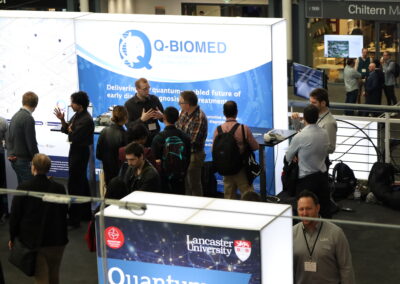Researchers at Imperial College London and Heriot-Watt University have discovered new ways to control the optical properties of 2D materials.
Optical properties define how a material interacts with light. These properties play an important role for solar harvesting devices like solar cells, as well as high-speed and compact optical communications systems, quantum computers and imaging techniques like super-resolution microscopy.
These new findings build upon previous research published in Nature Nanotechnology, where researchers observed energy steps called “Coulomb staircases” in the optical properties of 2D materials.
‘Opening the door to new applications’
2D materials, like graphene, are crystalline sheets – essentially very thin flat pieces of crystal with a thickness of only a few atoms. When two 2D materials are stacked on top of each other, and the top layer is rotated, this transforms both materials into a ‘twisted bilayer’ material. As a result, a beautiful moiré pattern emerges between the layers.
Researchers set out to discover new methods to enhance control over the optical properties of 2D materials. In a new approach, they demonstrate how an electric field can control the optical properties of twisted trilayer materials.
Their new results found a strong dependence on light polarisation can be observed when a sufficiently strong electric field is applied perpendicularly to the trilayer material. This unconventional behaviour can be explained in terms of the distribution of electrons across the trilayer.
This enhanced control aims to streamline the manipulation of optical characteristics, potentially accelerating the development of innovative quantum and optical technologies. For example, these new devices could be used as high speed (Mott) transistors and programmable quantum simulators, as they can be designed to probe complex physical systems based on quantum interactions.
Professor Johannes Lischner commented: “I am really excited about this work because it demonstrates how the optical properties of twisted multilayer materials can be controlled by an electric field.
This approach is much easier than changing the twist angle or the number of layers and opens the door to potential applications of these materials in nanophotonics or quantum technology.”
The full article can be read in Nature Physics.



